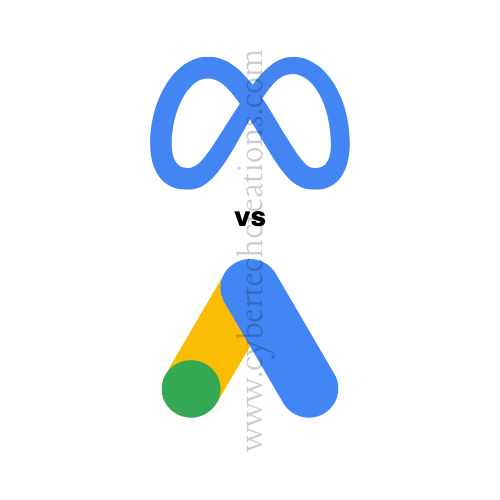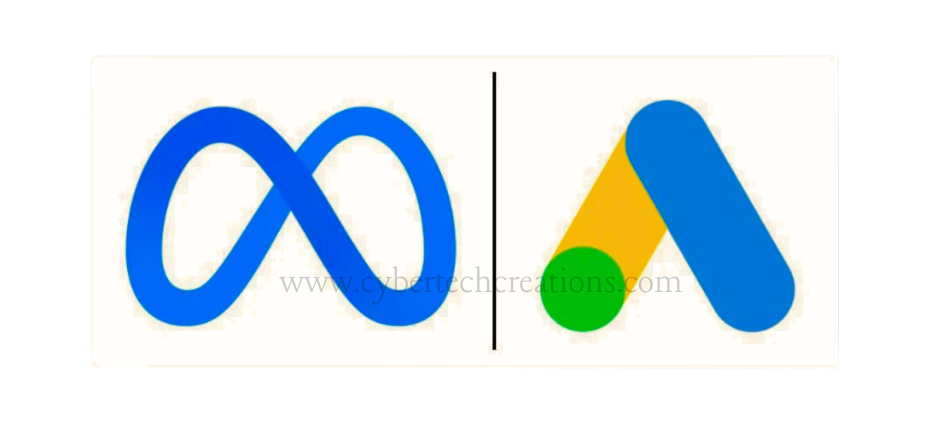
Google vs. Meta Ads: Which Platform Drives More Sales?
When it comes to digital advertising, two giants dominate the landscape: Google Ads vs. Meta Ads. Both platforms offer unique advantages, but which one drives more sales for your business? Whether you’re a seasoned marketer or just starting out, understanding the strengths and weaknesses of each platform can help you make the best decision for your advertising strategy.

Google Ads vs. Meta Ads: What Are They?
Before diving into which platform is better for sales, let’s break down what each one offers.
Google Ads: The Search Intent King
Google Ads allow businesses to display ads on Google’s search engine results pages (SERPs), YouTube, and Google’s partner websites. These ads are driven by search intent, meaning they appear when users actively look for specific products or services.
Key Features of Google Ads:
✅ Intent-Driven Traffic – Users are actively searching, making them more likely to convert.
✅ Massive Reach – Google dominates the search engine market with over 8.5 billion searches daily.
✅ Multiple Ad Formats – Text ads, display ads, shopping ads, and video ads for maximum engagement.
✅ Scalability – Advertisers can start small and scale their budgets based on performance.
Meta Ads: The Social Engagement Powerhouse
Formerly known as Facebook Ads, Meta Ads include advertising on Facebook, Instagram, Messenger, and Audience Network. These ads are visually engaging and focus on user behavior, targeting people based on their interests, demographics, and online activities.
Key Features of Meta Ads:
✅ Highly Visual – Eye-catching images and videos increase engagement.
✅ Advanced Targeting – Target users based on behavior, interests, and detailed demographics.
✅ Engagement Boost – Ads encourage likes, shares, and comments, strengthening brand presence.
✅ Cost-Effective – Generally, Meta Ads have a lower Cost Per Click (CPC) compared to Google Ads.
Google Ads vs. Meta Ads: Which Drives More Sales?
The answer depends on your business goals, audience, and budget. Let’s break it down further.
When to Choose Google Ads for Sales
Google Ads work best for businesses that want to capture high-intent customers looking for solutions.
✅ Best for E-Commerce & Service-Based Businesses
✅ Ideal for Local Businesses targeting nearby customers
✅ Great for High-Ticket Items where searchers are ready to buy
💡 Example: A user searching for “best running shoes under $100” on Google is likely ready to purchase. Google Ads ensure your product appears at the top of search results.
When to Choose Meta Ads for Sales
Meta Ads are ideal for businesses looking to create demand rather than capture existing demand.
✅ Best for Brand Awareness & New Product Launches
✅ Perfect for Lifestyle & Visual Brands (Fashion, Beauty, Fitness, etc.)
✅ Great for Retargeting & Customer Engagement
💡 Example: A fashion brand can use Instagram Ads to show off new arrivals with visually appealing posts and videos, attracting users who may not be actively searching but are interested in fashion.
Google Ads vs. Meta Ads: A Side-by-Side Comparison
Feature | Google Ads | Meta Ads |
User Intent | High – Users are actively searching | Low – Users are passively scrolling |
Ad Format | Text-based, video, display ads | Image & video-heavy |
Best For | Immediate conversions | Brand awareness & engagement |
Cost | Higher CPC due to competition | Lower CPC, cost-effective |
Targeting | Keyword-based targeting | Behavior & interest-based targeting |
The Winning Strategy: Combining Google Ads & Meta Ads
For maximum impact, a hybrid strategy using both platforms often delivers the best results.
🔹 Use Meta Ads to build brand awareness and attract new audiences.
🔹 Use Google Ads to convert high-intent users who are actively searching for your products or services.
🔹 Leverage retargeting – Use Meta Ads to retarget users who clicked on your Google Ads but didn’t convert.
💡 Pro Tip: Many successful businesses use Meta Ads to introduce their brand and Google Ads to close the sale.
Final Thoughts: Which One Should You Choose?
The best platform depends on your marketing objectives and audience behavior.
- If you want to capture high-intent buyers, go with Google Ads.
- If you want to build brand awareness and nurture leads, Meta Ads are a better choice.
- If you want the best ROI (Return on Investment), combine both platforms for a full-funnel strategy.
🚀 Want to maximize your ad performance? Start by testing both platforms, analyzing results, and refining your strategy over time.
For more digital marketing insights, visit CybertechCreations today! 🚀



